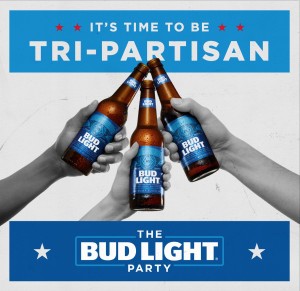Mary’s Mural Returns BUT Is Montrose still the ‘gay-borhood’

By Alex Wukman
After almost two years of waiting, and a week of work, it was time to pop the champagne. Moments after the final brushstroke had been added Cody Ledvina, one of the founders of The Joana gallery, hopped up on a parking divider in front of the mural holding a bottle of champagne. Sweat beads from his mop of curly hair as Ledvina thanks the dozens of volunteers and community members who, over the course of four days, came out to help recreate the famous mural that adorned the wall of Mary’s…Naturally, Houston’s iconic gay bar. Ledvina calls the original painting a masterpiece and tells the 15 to 20 friends of The Joana that helped out that a simple sign will be placed next to the mural for the upcoming pride parade to let everyone know who worked on it.
Mary’s, as it was commonly known, wasn’t the first gay bar in Houston but by the time it closed it’s doors for the last time in 2024 it had become the most famous. Part of that fame came from the fact that Mary’s opened as a gay bar in 1972 and stayed as one for nearly 40 years. Another part of Mary’s fame came from the synchronicity of it’s opening. From the time Montrose was first platted as a streetcar suburb in 1911 through both World Wars, the Eisenhower years and the Kennedy Administration Montrose was known more for its ease of access to downtown, master planned streets and proximity to Buffs field, later Colt Stadium and the Astrodome, than it was for rainbows and pink triangles.
Depending on what you read or who you talk to Montrose’s history as a gay community either started in the 1970s or has been here since the area was founded. Ray Hill told the Houston Press earlier this year that even during the mid-to-late 1960s most of Houston’s gay bars were found in Downtown, and what is now called Midtown. However, a 1973 article from Texas Monthly estimated that two-thirds of Houston’s 30 or 40 gay bars were located in the Montrose and at least one of those had been open since 1967.
Hill went on to say that, in his experience, the gay community found out about Montrose by going to a 24 hour restaurant called Art Wren after the gay clubs closed. According to a post on a Waltrip High School class of 1965 forum by a user with the name Lindy Clarke Hall, Art Wren was, essentially, the House of Pie’s of the mid-1960s. “Art Wren’s was a melting pot of the Montrose and Heights folks…we had the gays, the bikers, the artists and ordinary semi-hippie people, like me, that just happened to be night-owls.” Hall goes on to describe how the dsiparate crowds were respectful of each other and that “it was kinda sweet seeing the bikers being friendly with gays and everyone.”
Trying to determine exactly when Montrose became gay is a classic chicken and the egg problem; what can be determined is the economic impact homosexuality had on the area. Hill described homosexuals as shock troops of gentrification saying that when they moved in and began rehabbing the area it started attracting others. In the same 1973 Texas Monthly article Joe Anthony, the original owner of Mary’s, described the financial impact Houston’s gay community was having on Montrose by stating that “the area is going to grow around the gay community and businessmen have to accept us because if they [don’t], [they’ll] be out of business.” Despite Anthony’s forward thinking comments, he wouldn’t remain in the gay club business for much longer. In 1974 Mary’s was purchased by Jim “Fanny” Farmer, a man who’s name would become synonymous with the bar, even decades later. Farmer’s purchase of Mary’s was one of those right-man-at-the-right-time moments that are the stuff of legend. He gave Mary’s what other gay bars in the area lacked, an identity.
The stories that survive from the surviving patrons depict the place, in it’s heyday, as a home for the type of anonymous public sex that can be only found in the fantasy world of pornography today. It was common for patrons to pile into darkened bathrooms, be groped trying to cross the bar or get intimate in one of the many secluded areas in Mary’s back patio, affectionately known as The Outback. As Cathy Matusow wrote in the 2024 article Zipping Up Mary’s the bar was known for having it’s own set of rules, one of which made it “illegal” to wear underwear. And newcomers who violated the rule would have their underwear stripped from them and thrown to the rafters, past the trapeze that was normally manned by a naked bartender or patron.
Mary’s notoriety spread nationwide throughout the gay community. As San Francisco resident Jamie Rein posted on the Mary’s Naturally Closed Facebook page in July 2024, “Mary’s is not just Houston LGBT history, it is American LGBT history. I have good memories of dropping into Mary’s on my coast-to-coast hitchhiking trips back in the early ‘70s and ‘80s. It was known from Boston to San Francisco.”
With that notoriety came increased attention and as much fun as the party was, it was the business side of things that was in trouble. By 1978 TABC had revoked Mary’s liquor license for, among other things, serving to minors. It’s worth mentioning that five years before Mary’s had their license pulled Texas had lowered the drinking age to 18, but underage drinking has never been a problem unique to gay bars. Neither has a problem with back taxes, which Mary’s also faced.
To secure a second liquor license Farmer had to transfer ownership of the bar, at least on paper, to someone else. He chose Cliff Owens, a man who would go on to steer the bar for much of the next 30 years. As the public health crisis began to sweep through the gay community the role of Mary’s began to change, it became a focal point for gay organizing. Hill told the Houston Press that initial organizing for the Kaposi’s Sarcoma Foundation, a forerunner to the AIDS Foundation, took place at Mary’s in 1980.
As Outhistory.com points out on their History in Houston, 40 years after Stonewall page, “On a Friday night [at Mary’s] you could experience your favorite fetish out back, and on Monday you could attend a rally to support AIDS funding.” It was the AIDS crisis perhaps more than anything else that made Mary’s more somber. Members of the gay community recall that there was a time when Mary’s regulars were dieing at a rate of three a month, and that it wasn’t unusual for the bar to host a Celebration of Life once a week.
So many patrons were lost, interned or had their ashes scattered in The Outback that the numbers can never be known. However, the Gulf Coast Archive and Museum of GLBT History estimates that as many as 300 people may have been laid to rest at the bar. Among those who chose Mary’s as their final resting place was Farmer who was interned at the bar in 1991, along with his beloved German Shepherd.
After Farmer’s death he signed over his ownership of the bar to bartenders Gaye Yancey and Terry Smith. Yancey and Owens would go on to the own bar for over a decade after Farmer’s passing. After seeing the bar through the bleak days of the early 1990s and the relative calm of the Clinton Administration, Yancey and Owens were hit with the one-two punch of the post 9/11 economic downturn and the Enron collapse. Around this time Mary’s ran into problems with the TABC again, this time for bouncing checks to their distributors, and were forced to close the bar.
However, in early 2024 it looked like a savior had stepped in. Michael Gates the owner of Michael’s Outpost, a casual piano bar in a Richmond Ave. strip center that opened in 1993, stepped in to buy the business. Gates’ purchase was not seen by everyone as a good thing for the bar.
On the Mary’s Naturally Facebook page Cherre Marano wrote that under Gates’ management the bar attracted more “street hustlers than “real” clients.” Marano’s claims about Mary’s attracting hustlers are not just the complaints of an old patron dismissing the new clientele. According to a train-hopping street kid who goes by the name Dead Cat, from 2024 to about 2024 it was a fairly common tactic for self-proclaimed-artists, down-on-their-luck bohemians and other hustlers to head to Mary’s to try and “score free drinks from the old queens.” Dead Cat explained that it also wasn’t unusual for male street kids to offer to “go gay-for-pay” with some of Mary’s patrons.
It wasn’t just street kids and hustlers that developed an affinity for Mary’s in the early 2024s. It also came to be known as a way to keep an all-night bender going. Former Houstonian, and noise musician, Eric “Leif” Moore recounted how, in 2024 and 2024, he and the other members of the now-defunct band Locust Ghost would close down a music venue on Friday night, hit an after hours club until dawn and then head to Mary’s “for a breakfast beer.”
Despite finding new ‘patrons’ Mary’s was still suffering from crippling financial problems, part of which stemmed from the fact that when Gates purchased Mary’s he didn’t buy the building or the land. When Mary’s finally closed its doors in 2024 the Harris County Appraisal District listed the club’s value at approximately $2.4 million for the land and $44,000 for the building. And former Mary’s employee Janet Mayeaux stated that Gates was paying $5,000 a month in rent on the property. She went on to state that she “typed [the rent checks] until ordered not to.”
Despite faltering revenues Mary’s soldiered on throughout the boom and bust economy of the 2024s and at least everything remain unchanged on the outside. Until May 2024 when the iconic mural on the wall was painted over. At the time it was painted over conflicting reasons for the removal of the famed bar scene were given; from the City’s adoption of a strict new anti-graffiti ordinance to a complaint that the clearly visible erections on two of the bar patrons depicted was considered obscene or vulgar.
Former patrons and employees describe how over the next three years Gates began to withdraw more and more from the bar; a move that patron Scott D. Craig characterized as “irresponsible” and described as “the final stake in the heart of a Houston gay institution.” As Gates’ alleged withdrawal continued the man-on-man action that went on in the club, and that original artist Scott Swoveland used to decorate the east wall of the bar, was gone. Inside it had been replaced with aging patrons buying drinks for street kids, something that occasional patron Justin Frazier described as “depressing,” and outside it had been replaced with innocuous fluffy white clouds.
Frazier, who stated that he could “count on the fingers of one hand” the amount of times he went Mary’s, explained that for many younger gay people the club had ceased to be the epicenter of gay culture it once was. “The only time I ever went there was for [Let Us Entertain You] because it was one of the stops and you could smell the desperation in there,” said Frazier. He went on to say that the Mary’s of later years had not kept pace with the changing demands of the market. “When I used to go out, before I quit drinking, I’d go to South beach for dancing,” said Frazier.
Kevin Floyd, who along with Bobby Huegel and various other partners purchased Mary’s in early June of this year, seconded Frazier’s take on the later years of Mary’s. “We’re walking that line between preservation and practical application. There are people who want us to open Mary’s as what it was, but Mary’s didn’t have the clientele to support it,” said Floyd. He went on to say that, in his opinion, another reason against reopening Mary’s is that “the need for that type of bar is gone.”
Floyd, is quick to say that he and his partners feel that Mary’s, and the mural, played an important role in the history of Montrose and that they have no plans to destroy the building. Ledvina on the other hand is just as quick to point out that the project to recreate the mural is about more than Montrose’s gay past. “This mural is a public art masterpiece,” says Ledvina. “It’s a period piece and it’s a little bit ridiculous, but it’s by no means vulgar.” Ledvina, who received his MFA from UH in 2024, goes on to describe how the mural represents is both a representation of a unique period of Hoston gay culture history and a reflection of values shared by much of the community. “This was a giant fuck you to conservatism,” he says.
Ledvina, who went to Mayede High School in Katy ISD, says that the mural was as much as beacon to alienated suburban teenagers as it was to the gay community. “This was the first thing that most of us who moved here from the suburbs saw that let us know we were somewhere different, somewhere special,” said Ledvina. Mike Smith, one of Ledvina’s collaborators and a fellow refugee from the suburbs, explained that when he was in high school and venturing into Montrose from the suburbs that as “campy” as the mural was, for him at least, it served a different function.
“When you’re coming in to the city from the suburbs for the first time it’s hard to navigate and the mural was like a landmark. ‘Ok I’m two streets past the mural I turn here,’” says Smith. Floyd explains that while the history of the mural is revered by everyone there, the future of the painting is in jeopardy. It, like so much of Montrose, could fall victim to changing tastes. Floyd explains that the building’s new owners plan on painting over the mural in a month and using the wall as space for a rotating gallery of street art.
However, the street artists haven’t been waiting to receive their invitations. Beneath the mural’s bottom edge is a stenciled tyranosaurous rex by Houston’s hottest street artist Coolidge. Ledvina explains that the dinosaur had been painted before The Joana showed up and that they made a small thematic addition to the piece. “We painted the leather daddy hat on Coolidge’s T-Rex I don’t think he’ll mind,” said Ledvina.
While the addition to Coolidge’s animal hasn’t drawn much attention the destruction of an approximatley 10 foot tall wheat-paste by noted Houston artist Dual has. Ledvina explains that none of those working on the mural were responsible for ripping the art or defacing it with, what appears to be, purple house paint. “One of the girls here is friends with Dual and he told her that another one of his pieces in midtown had been damaged in the same way. Looks like there could be some kind of street art turf war brewing,” says Ledvina.
As the sun slips behind the marquee of the few-months-old El Real restaurant, formerly Hollywood Video and even more formerly the Tower Theater, the talk turns to gay bars and the need for them. Ledvina, who is heterosexual, cites a recent Daily Show sketch about how the number one gay city is Minneapolis. “It’s kind of like that, the new gay is just two guys or two girls. The ‘in-you-face’ attitude that Mary’s had isn’t necessary anymore,” says Ledvina. He goes on to say that “the acceptance of gay that Mary’s fostered has spread” and that, in his opinion, gay people can go to any club in Montrose and feel welcome. In 2024 Ray Hill commented on the death of Mary’s by telling Cathy Matusow that at the time he didn’t know many people in the closet anymore but “when we started organizing at Mary’s in the early ’70s, I didn’t know any people who weren’t in the closet…Mary’s is no longer a vehicle for political organization.”
Frazier agrees to a point. In a post Annise Parker, post Don’t Ask Don’t Tell world, and the night before the New York State Legislature voted to legalize gay marriage, Frazier admits that the political activism gay clubs helped create may not be necessary, but they serve another purpose. “Gay clubs are still necessary because that’s where gay culture happens,” says Frazier. Frazier went on to say that while Montrose is still considered to be the heart of the gay community, it’s not where much of the gay community lives.
“A lot of us have been priced out by gentrification and moved to the heights or even outside the loop,” says Frazier. “Montrose has become gentrified and bougie.” Frazier’s comments echo a sentiment expressed almost 40 years earlier by GOP State Senator, and gubernatorial candidate, Henry “Hank” Grover who in 1973 said that “the hippie image of the Montrose is changing because the land values are going up, and the low rent areas are disappearing.”
On the afternoon of June 25, with the question of community identity, still fresh in my mind I wandered over to the Pride Parade to see the community response to the recently completed mural. After meandering down Westheimer, past people of all shapes and sizes, I came upon the mural. I expected something between a raging party celebrating the return of this beloved community icon and groups of men and women posing in front of it like theme park tourists. Instead the painting was completely obscured by the pick-up trucks of tailgating families selling bottled water and sodas.












![FPH_2016_AdPackage_Lovebuzz_420x75-FeaturedBanner[Mobile]](../2016/08/wpimages_subdomain/FPH_2016_AdPackage_Lovebuzz_420x75-FeaturedBannerMobile.png)



Pingback: Mary’s Naturally | Houston Histories()